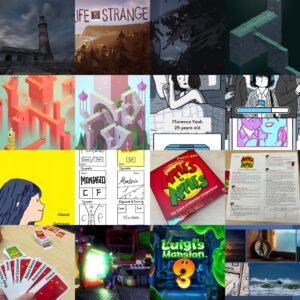Before embarking on my journey with CS 247G, my viewpoint on games was mostly confined to the lens of a player. I relished the thrill and joy they provided, enjoying various genres without contemplating the underlying design elements. The intense emotions evoked by games intrigued me, steering me towards this class to uncover the process behind the magic.
Transitioning from a player to a designer opened up a new vista of understanding for me. I grappled with the web of rules and systems that orchestrate the playful environment, juggling between complexity and accessibility, challenges and enjoyment, strategic and spontaneous elements. This journey made me realize the intricate craft that goes into instilling “fun” in games – it wasn’t just a serendipitous outcome but a product of thoughtful design decisions.
Abstractionary was the first fruit of my labor, a manifestation of my transformative journey. We chose Pictionary, a game brimming with thrill, and remolded it by introducing novel constraints – Abstraction and DRAWback cards. The aim was to push players beyond their comfort zones, forcing them to rethink their representation of objects and guessing methods. It was during this phase that the complex layers of game design started unraveling before me. Initially, it seemed as though constraints might hamper fun, but to our surprise, they actually enhanced the gameplay’s excitement. These layers of challenges gave the game an edge, amplifying the thrill for our players during testing.
While designing Abstractionary, I experienced a heightened sens
e of the significance of balancing game mechanics to sustain player engagement. Each iteration of the game underlined the fact that achieving balance is not a one-time process but a constant cycle of tweaks and refinements. Like balancing on a seesaw, game design required continuous adjustments to maintain the equilibrium between challenge and enjoyment. Looking back, I can see there is still scope for improvement and innovation in Abstractionary, such as introducing new constraints or refining the existing ones to heighten the challenge.
Flight from the Gorgon was an adventure into the world of escape-room experiences. Our design goals were clear – accessibility, seamless progression, and a universally appealing entertainment experience. By adopting sequential card identification, a gameplay mechanic from ‘Unlock’, we attempted to distill the thrill of an escape room into a board game.
But game design wasn’t merely about duplicating a mechanic; it was also about spinning an immersive narrative. Our story about pirates and witches breathed life into the gameplay, demonstrating how a compelling narrative can significantly amplify player engagement. However, reflecting on the feedback from our playtesters, I realize that the narrative could be further enriched to deepen the gameplay. Enhancements could include more complex puzzles or varied paths to victory, keeping players engaged throughout the game.
Designing Abstractionary and Flight from the Gorgon was a testament to the evolutionary nature of game design – a process of continuous learning, adaptation, and refinement. Feedback played a pivotal role in this journey, offering insights to hone gameplay and enhance player experience. As I gaze into the future, I see vast opportunities for enhancing and innovating on both games, armed with the wisdom gleaned from CS 247G.
One of the most resonant concepts from the class was accessibility. Rather than designing for individuals, we learned to design for environments that bridge the gap between abilities. This paradigm shift deepened my understanding of inclusive game design, catering not just to permanent disabilities but also to temporary and situational constraints. This insight permeated our design process, influencing us to create games that offer an engaging experience for all players, irrespective of their circumstances.
This journey was not without hurdles. The iterative cycle of designing, playtesting, and incorporating feedback was challenging but immensely rewarding. Feedback acted as a mirror reflecting the strengths and shortcomings of our designs, teaching me the importance of adaptability in design.
The transformation I underwent during this course was profound. I transitioned from a player to a designer, developing a keen sense for the nuanced components that culminate in a game’s success. I recognized the critical role of inclusivity in design, enhancing my sensitivity to the diverse needs of players. This journey honed my problem-solving acumen, adaptability, and empathy, enriching me as a designer and a player.
As I look to the future, I aspire to continue refining my games, building upon the foundations laid during this course. I aim to delve deeper into the power of narratives and explore their potential to create highly immersive gaming experiences. I am committed to promoting accessibility in game design, striving to craft inclusive experiences for all players. This course has fostered a deep-seated appreciation for games in me, no longer viewing them as mere sources of entertainment but as complex crafts that weave together myriad elements to create engaging and meaningful experiences.





